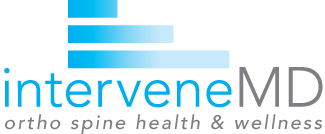Extracorporeal Shockwave & Magnetotransduction Therapies
Pain Relief, Pulsed Energy
Shockwave Therapy (ESWT) is a non-invasive, non-injection therapy that delivers strong energy pulses to the affected area.
This stimulates the cells in the body responsible for bone and connective tissue healing. It is gentle on tissue and can help alleviate pain long-term.
A gel is applied to the treatment area to allow the shockwaves to be passed into the body without any loss of energy. After this preparation, a wand is moved over the pain region in a circular motion, passing the energy impulses to the tissue.
Shockwave Hours:
7:30am - 5pm
7:30am - 6pm
Commonly Treated Conditions
Each therapy session takes between 5-10 minutes, depending on the disorder treated. For acute injuries, an average of 6-8 treatments are necessary at weekly intervals.
Revolutionizing Pain Management
Extracorporeal Magnetotransduction Therapy (EMTT) is a new FDA-approved non-invasive procedure developed to treat musculoskeletal pain.
It differs from other forms of magnetic field therapy, such as pulsed electromagnetic field therapy (PEMF) as it produces a higher oscillation frequency and stronger magnetic field, also known as “transduction power”.
EMTT is largely a risk-free, side effect-free, and pain-free treatment that penetrates deep into the painful area, initiating an anti-inflammatory response and reducing pain. Direct skin contact is not necessary so patients can remain fully clothed.
Commonly Treated Conditions
High-energy magnetic pulses are transmitted to your body in a session that lasts about 5-10 minutes, for about 6-8 sessions, depending on the diagnosis.
- Sports Injuries to Tendons and Joints
- Back & Lower Back
- Herniated Discs
- Tendon Overuse Injuries
- Tension Nerve Root Pain
- Spondyloarthritis of the Spine
- Inflammation Over the Pubic Bone
- Osteoarthritis
- Bone Fractures
